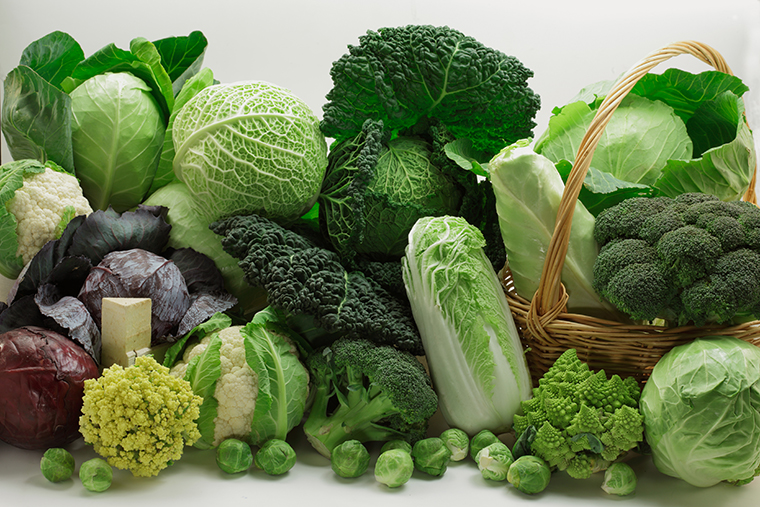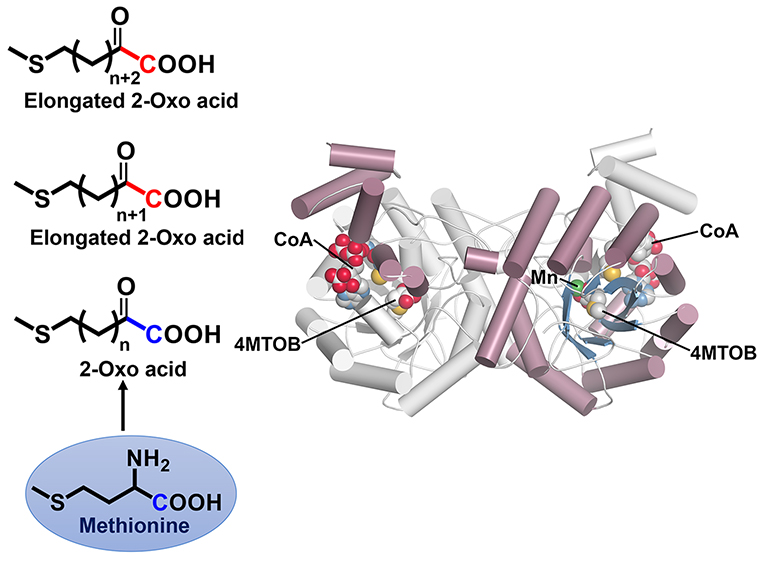St. Louis, Missouri, USA
July 11, 2019
 Biologists have mapped the crystal structure of a key protein that makes the metabolites responsible for the bitter taste in Brassicas. The results could be used along with ongoing breeding strategies to manipulate crop plants for nutritional and taste benefits. (Photo: Shulevskyy Volodymyr, Shutterstock)
Biologists have mapped the crystal structure of a key protein that makes the metabolites responsible for the bitter taste in Brassicas. The results could be used along with ongoing breeding strategies to manipulate crop plants for nutritional and taste benefits. (Photo: Shulevskyy Volodymyr, Shutterstock)
The mustards, broccolis and cabbages of the world share a distinct and bitter taste. Some consider the flavor of cruciferous plants their strongest attribute. But even in India and China, where Brassicas have been cultivated for more than 4,000 years, scientists have sought to tone down the chemical compounds responsible for their pungent flavor. Turns out, the same compounds that make them bitter also make them toxic at some levels.
Now researchers from three continents — including biologists from Washington University in St. Louis — have mapped the crystal structure of a key protein that makes the metabolites responsible for the bitter taste in Brassicas. A study published this month in the journal The Plant Cell is the first snapshot of how the protein evolved and came to churn out such diverse byproducts in this agriculturally significant group of plants.
The results could be used along with ongoing breeding strategies to manipulate crop plants for nutritional and taste benefits.

Joseph Jez
The new work is born of a longtime collaboration initiated by Naveen C. Bisht, staff scientist at the National Institute of Plant Genome Research, in New Delhi, India, with Joseph Jez, professor of biology in Arts & Sciences at Washington University, and Jonathan Gershenzon, of the Max Planck Institute for Chemical Ecology, in Jena, Germany.
“All of the Brassicas — be it Indian mustard, Arabidopsis, broccoli or brussel sprouts — they all make these pungent, sulphur-smelling compounds, the glucosinolates,” Jez said. The compounds have long been recognized as a natural defense against pests.
“Plants need to fight back,” Jez said. “They can’t really do anything, but they can make stuff.”
“There’s different profiles of glucosinolates in different plants,” he said. “The question has always been if you could modify their patterns to make something new. If insects are eating your plants, could you change the profile and get something that could prevent crop loss?”
But there are a daunting number of glucosinolates: almost 130 different kinds recognized within the Brassicas. Each plant species within the genus makes a “collection” of several different kinds of glucosinolates — its own flavor mix — all of which are secondary metabolites of a particular protein.
Researchers have known about the central role of this protein for decades. But prior to this study, no one had ever been able to complete the x-ray crystallography necessary to map it in detail.

Indian mustard, like the yellow flowered plants above, is an important agricultural crop in many parts of the world. (Photo: Soon Goo Lee)
The new work, co-led by Roshan Kumar, now a postdoctoral fellow in the Jez laboratory at Washington University, uses genetics, biochemistry and structural biology to help unravel the molecular basis for the evolution and diversification of glucosinolates.
“Glucosinolates are derived from amino acids,” Kumar said. “Gene elongation is one of the important steps that provides most of the diversity in the glucosinolate profiles across all of the Brassicas. It decides which type of glucosinolates (the plant) is going to form.”
The insight gained in the new study is important step toward mustering a milder mustard, or building a bitter-free broccoli.
But will it help us to eat our greens?
Maybe. Mostly researchers are interested in the potential for modifying glucosinolates in seeds, not in the stems or leafy parts of Brassica plants, Kumar said.
The major oilseed crop Brassica juncea and related rapeseeds are used to make cooking oil in temperate and subtropical areas of the world. Plant breeders have sought to adjust the levels of glucosinolates in these crops so that the protein-rich seed cake leftovers can be used as a feed supplement for cattle and poultry.
“If you decrease glucosinolates from all over the plant, it becomes susceptible to pests and pathogens,” Kumar said. “That is why there is a need for smart engineering of glucosinolates.”

Read more: “Molecular Basis for the Evolution of Methylthioalkylmalate Synthase and Diversity of Methionine-Derived Glucosinolates,” Kumar et al. (2019). The Plant Cell. This work was funded in part by a National Science Foundation grant (NSF-MCB-1614539).